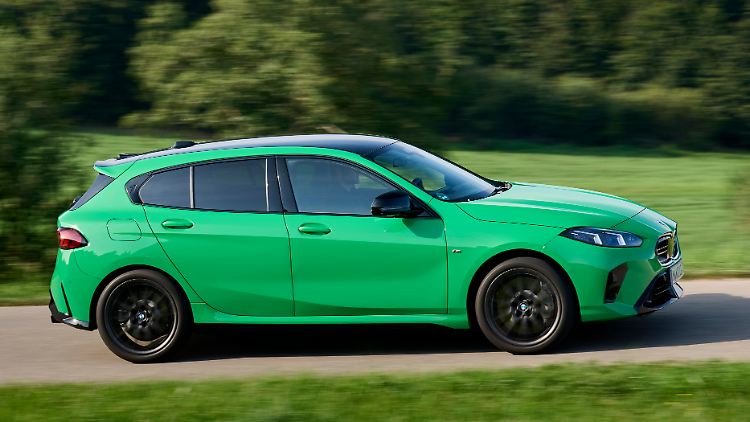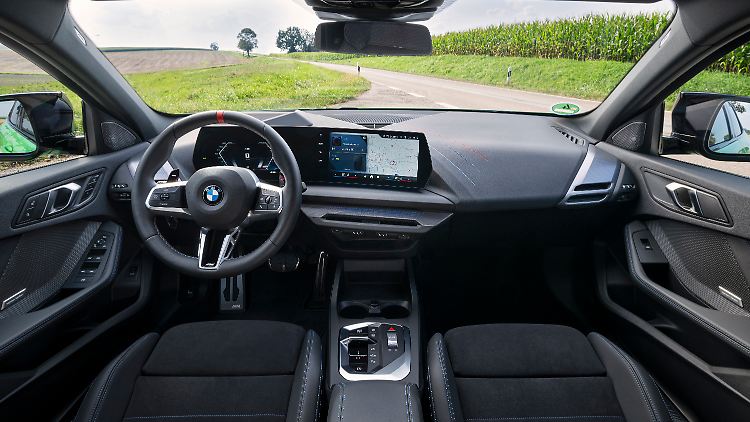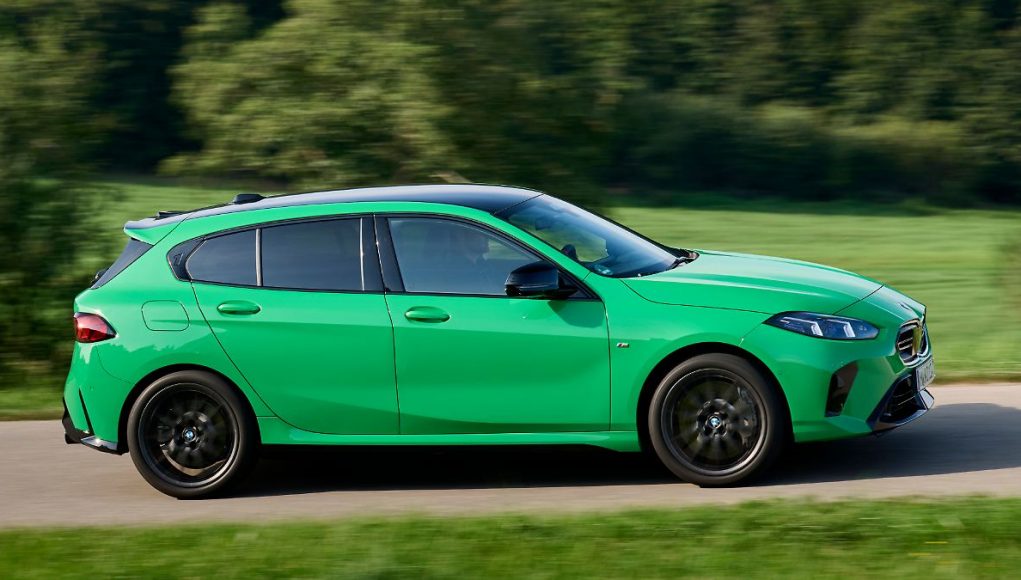After just five years, the second generation of the BMW one-series with front-wheel drive is about to hit the market. Does the new model series mean progress?
When the first front-wheel drive 1 Series BMW was introduced around five years ago (the first front-wheel drive BMW ever was the 2 Series Active Tourer in 2014), the reaction from the specialist press was mixed. Some colleagues criticized the drive influences in the steering wheel and the switch from automatic torque converter to dual clutch transmission. Other testers praised the additional space. Of course, the elimination of the cardan tunnel and the transverse instead of longitudinal installation of the engines save space, which in turn benefits the passengers.


Thanks to a little more length and height, BMW's new compact is coming of age. However, nothing changes in the wheelbase.
(Photo: BMW)
So now the second generation is just around the corner. And the fans are watching it closely. When reading the data sheet, critical voices are already raised. Why does the 120, which weighs 1500 kilograms (now without letters as an additional designation), accelerate to 100 km/h around a second slower at 7.8 than the previous 120i? That's basically simple – the new one with its 170 hp system output is just 8 hp weaker. The power consists of 156 combustion engine and 20 electric horsepower. In addition, the electric motor in the seven-speed dual clutch boosts the system with an additional 55 Newton meters. Product management counters the question about the underpower by arguing that the 120 is actually more comparable to the old 118i. Interesting approach.
120 now stands for three-cylinder


The four-pipe exhaust system represents the strong M-Performance model.
(Photo: BMW)
In any case, the fact is that the 120, now called “F70”, uses the B38 three-cylinder engine from the earlier 118i. And you can hear that from the first few meters. The new candidate picks up speed with a robust hum instead of a smooth hum, but it doesn't necessarily feel like it's significantly less snappy. In everyday life, the nominally slightly lower acceleration is negligible anyway. What you're more surprised about is that the boost doesn't manage to completely compensate for the small turbo lag of the supercharged high-tech gasoline. BMW has technically upgraded the petrol engine, which delivers 240 Newton meters of torque. To increase efficiency, it injects the fuel mixture either directly into the combustion chamber or alternatively into the intake manifold and works according to the Miller principle with shorter opening times for the inlet valves. In this way, the engineers reduce fuel consumption to less than six liters per 100 kilometers in the WLTP discipline.
However, anyone who opts for the much more expensive M135 xDrive (56,200 instead of 37,900 euros base price) will probably be a little more interested in the drive and a little less in the fuel consumption. The BMW press team also brought it along for its first test drives. In the top models available here, which are significantly painted in signal green, with 300 hp (without electrification), eight liters of super can flow through the lines.
The signs are all about performance and the four-cylinder storms off with almost no traction problems to break the 100 km/h mark within 4.9 seconds. Aside from distributing power to all four wheels, the technicians have also given this M-Performance model a mechanical limited-slip differential on the front axle. And because a complex combustion engine drive train with a delayed build-up of torque, for example compared to the electric car and many gears to change, does not always start immediately depending on the driving mode, there is again the boost function on the steering wheel paddle, similar to other BMW models. In this case, the passenger is stuck quite firmly in the newly designed seat in conjunction with full engine load.
Toxic M135 xDrive
In sport mode, the one-thirty-five reacts a bit more venomously, accompanies every gear change of the dual-coupler with a short misfire crack from the exhaust system. Can this deliberately composed aggressive tonality replace the more elegant sound of the earlier in-line six-cylinders with rear-wheel drive? Not really. But the agility on the winding country road wipes away this objection. You feel connected to the machine behind the wheel of the 1.6-ton M135 xDrive (here too, the “i” is missing, which in the future will only be intended for electric vehicles).


Distinctive sports seats are available ex works on the M135 xDrive.
(Photo: BMW)
Numerous optimizations in the chassis area are intended to increase the steering precision of the 1 Series BMW. The body has become stiffer and there is a strut brace in the engine compartment to generate even more rigidity. The fact that the top version turns more quickly may also be due to the slightly different steering ratio, but you couldn't attribute a lack of driving fun to the bright green compact sports car. What is also pleasant is that the crew is held firmly in the middle when cornering ambitiously by contoured sports chairs with Alcantara upholstery.


Of course, passengers will find the “curved display” in the new BMW one-series. Bad times for fans of the mechanical display mechanism.
(Photo: BMW)
With the same wheelbase (2.67 meters), the now 4.36 meter long Bavarian has become around four centimeters longer. The predecessor was hardly perceived as particularly narrow. However, after boarding, a completely different impression dominates: physical buttons have disappeared, apart from the classic volume control in the center console. And you have to deal with BMW Operating System 9, which works without any problems after a bit of getting used to. It remains to be seen whether you can or want to get used to the optional Level 2 driving automation.
It's no longer possible without an illuminated kidney
Anyone who is still hesitant about whether they can get used to the new BMW 1 Series should take a look at the front, especially at dusk, where the illuminated kidney grille does a very good job as a visual booster. Otherwise, the compact car is pleasant and calm and avoids the excessive use of beads in the sheet metal. “Keep it simple” seems to be the design motto. The slight spikes in the taillights are reminiscent of the coupé-like X2 and signal family affiliation. The compact also follows the new BMW fashion, in which the embedded model series designation is placed in the area of the well-crafted Hofmeister kink (C-pillar). Fine.
Finally, a note that the 120 is not the entry-level model. For those who hate performance, there is still the 116 without electrification (122 hp) at a price of 32,900 euros. In addition, two diesel engines, the 118d and 120d, are offered at rates of 38,200 and 40,500 euros, respectively. The only difference, however, is that the base model does not require electrification, while the 120d has 20 electric horsepower in addition to its combustion engine's 150 horsepower, resulting in a stated system output of 163 horsepower. A medium 123 xDrive (218 hp system output) rounds off the model range. The agony of choice is not reduced with the new model. It's not really fun to drive either. Try it.































